 1988 Mercedes-Benz 190 (W201, facelift 1988) Dimensions, Size & Specs
1988 Mercedes-Benz 190 (W201, facelift 1988) Dimensions, Size & SpecsMeasurements of the 1988 Mercedes-Benz 190, engineered for optimal performance and comfort
| Dimensions | |
|---|---|
| Length: | 4430-4543 mm174.4-178.9 in14.5-14.9 ft |
| Width: | 1690-1720 mm66.5-67.7 in5.5-5.6 ft |
| Height: | 1342-1375 mm52.8-54.1 in4.4-4.5 ft |
| Trunk Capacity: | 410 liter14.5 cu ft |
| Weight Specifications | |
| Curb Weight: | 1160-1340 kg2557-2954 lbs |
| Maximal permitted Weight: | 1660-1840 kg3660-4057 lbs |
| Roof Load: | 100 kg220 lbs |
| Tire Specifications | |
| Rims Sizes: | 15-inch rims:
|
| Tire Sizes: |
|
The Mercedes-Benz 190 (W201 facelift 1988) is a refined version of the iconic compact executive sedan, produced from 1988 to 1993. This generation represented a significant evolution in the W201 series, combining classic Mercedes engineering with subtle design updates. The car's length ranges from 4430 mm to 4543 mm (174.4 to 178.8 inches), offering a compact yet spacious footprint ideal for urban and highway driving. Its width varies between 1690 mm and 1720 mm (66.5 to 67.7 inches), providing a stable stance without compromising maneuverability. Height measurements lie between 1342 mm and 1375 mm (52.8 to 54.1 inches), resulting in a sleek silhouette typical of luxury sedans from this era. Curb weight ranges from 1160 kg to 1340 kg (2557 to 2954 lbs), balancing strong structural integrity with efficient performance. The maximum allowable weight spans 1660 to 1840 kg (3659 to 4056 lbs), reflecting its capability to carry passengers and cargo effectively. Inside, the 190 accommodates luggage with a 410-liter (14.5 cubic feet) trunk space—adequate for daily needs and light travel. The roof load capacity stands at 100 kg (220 lbs), enabling additional cargo options when equipped with racks. Wheel sizes vary from 6J x 15 up to 8.25J x 17, paired with tire options including 205/55 R15, 185/65 R15, 245/40 ZR17, and 225/50 R16, offering a range of setups balancing comfort and performance. Overall, the Mercedes-Benz 190 (W201 facelift 1988) remains a compelling choice for enthusiasts and commuters alike, combining timeless design with practical dimensions and reliable mechanics.
Discover the standout features that make the 1988 Mercedes-Benz 190 a leader in its class
Have a question? Please check our knowledgebase first.
The Mercedes-Benz 190 (W201 facelift 1988) has a length ranging from 4430 mm to 4543 mm, which translates to approximately 174.4 to 178.7 inches. Variations in length depend on specific model and equipment choices, including bumper designs and trim levels. This size provided a compact yet comfortable sedan profile suitable for urban and highway driving, striking a balance between maneuverability and on-road presence.
The width of the Mercedes-Benz 190 (W201 facelift 1988) ranges from 1690 mm to 1720 mm, which is about 66.5 to 67.7 inches. This relatively narrow width helps the car stay agile in traffic and makes parking easier, yet it still offers adequate shoulder room for passengers, providing a comfortable cabin space for a compact executive sedan of its era.
The height of the Mercedes-Benz 190 (W201 facelift 1988) varies between 1342 mm and 1375 mm (approximately 52.8 to 54.1 inches). This moderate height contributes to good aerodynamic efficiency while maintaining sufficient headroom for front and rear passengers. The slightly lower roof compared to earlier sedans underscores the W201's sporty yet practical design ethos.
The curb weight of the Mercedes-Benz 190 (W201 facelift 1988) ranges from 1160 kg to 1340 kg (around 2557 to 2954 pounds), while its maximum weight capacity is between 1660 kg and 1840 kg (3661 to 4056 pounds). These weights reflect the variation in engine configurations, trim levels, and optional equipment. The maximum weight includes passengers and cargo, ensuring a reliable load capacity for typical sedan usage.
Yes, the Mercedes-Benz 190 (W201 facelift 1988) generally fits comfortably within a standard residential garage. Given its length of up to 4543 mm (178.7 inches), width up to 1720 mm (67.7 inches), and height up to 1375 mm (54.1 inches), it is compact enough to fit within typical garage dimensions, which usually measure about 2.4 to 3 meters (7.9 to 9.8 feet) wide and 5 to 6 meters (16.4 to 19.7 feet) long. Its size facilitates easy storage without requiring specialized garage space.
The luggage capacity of the Mercedes-Benz 190 (W201 facelift 1988) is 410 liters (approximately 14.5 cubic feet). This capacity is sufficient for daily commuting, grocery runs, and moderate travel luggage. It offers useful trunk space for a compact executive sedan of that time, balancing passenger comfort with cargo utility. The trunk is well-shaped for accommodating standard suitcases or shopping bags.
Compared to the original Mercedes-Benz 190 (W201) introduced before the 1988 facelift, the facelifted version maintained very similar overall dimensions but introduced slight tweaks in length, width, and height depending on the specific model and trim. These minor dimension changes improved aerodynamics and styling without moving significantly away from the well-established compact executive sedan size. The facelift focused more on design refinements and technological upgrades than size increase.
When compared with contemporaries like the BMW 3 Series E30 and Audi 80 of the late 1980s and early 1990s, the Mercedes-Benz 190 (W201 facelift 1988) closely matches their sizes. Its length around 4.4 to 4.5 meters, width about 1.69 to 1.72 meters, and height near 1.34 to 1.38 meters place it squarely within the compact executive sedan segment. Each of these models focused on combining maneuverability, interior space, and premium appeal, with the 190 being noted for its solid build quality and conservative dimensions.
Standard rim sizes for the Mercedes-Benz 190 (W201 facelift 1988) range from 6J x 15 inches to 8.25J x 17 inches. Tire sizes available include 205/55 R15, 185/65 R15, 245/40 ZR17, and 225/50 R16, offering a range of options that balance comfort, handling, and sporty performance. These sizes ensured the car could suit different driving preferences and road conditions while maintaining stable performance.
The Mercedes-Benz 190 (W201 facelift 1988) has a maximum roof load capacity of 100 kg (220 lbs). This means it can safely carry items such as roof boxes, luggage carriers, or sports equipment like bicycles when properly mounted. This load limit is typical for sedans of its class, ensuring the structural integrity of the roof and vehicle handling remain uncompromised.
Discover similar sized cars.

| Production: | 1986-1990 |
|---|---|
| Model Year: | 1986 |
| Length: | 4520 mm178.0 in |
| Width: | 1690 mm66.5 in |
| Height: | 1370 mm53.9 in |
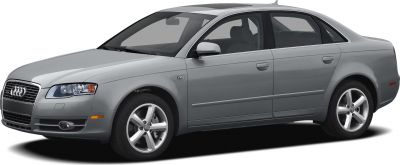
| Production: | 2004-2008 |
|---|---|
| Model Year: | 2005 |
| Length: | 4548-4601 mm179.1-181.1 in |
| Width: | 1937 mm76.3 in |
| Height: | 1397-1427 mm55.0-56.2 in |
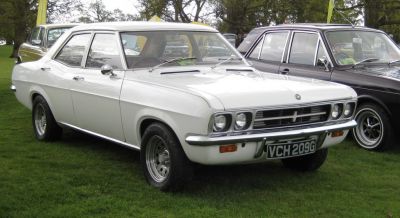
| Production: | 1967-1972 |
|---|---|
| Model Year: | 1967 |
| Length: | 4488 mm176.7 in |
| Width: | 1699 mm66.9 in |
| Height: | 1333 mm52.5 in |
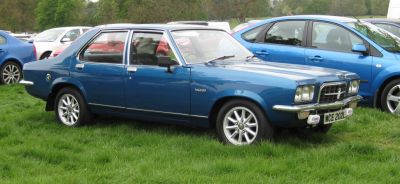
| Production: | 1969-1978 |
|---|---|
| Model Year: | 1972 |
| Length: | 4488-4546 mm176.7-179.0 in |
| Width: | 1699 mm66.9 in |
| Height: | 1313-1371 mm51.7-54.0 in |
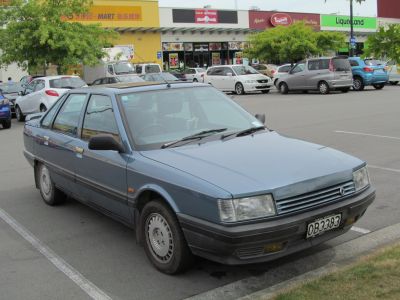
| Production: | 1989-1994 |
|---|---|
| Model Year: | 1989 |
| Length: | 4530 mm178.3 in |
| Width: | 1730 mm68.1 in |
| Height: | 1415 mm55.7 in |

| Production: | 1993-1998 |
|---|---|
| Model Year: | 1993 |
| Length: | 4490 mm176.8 in |
| Width: | 1695 mm66.7 in |
| Height: | 1355 mm53.3 in |
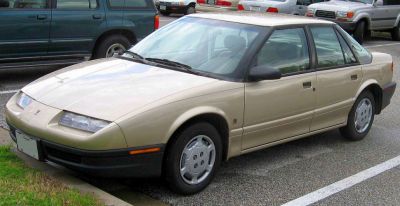
| Production: | 1990-1995 |
|---|---|
| Model Year: | 1991 |
| Length: | 4478 mm176.3 in |
| Width: | 1718 mm67.6 in |
| Height: | 1334 mm52.5 in |
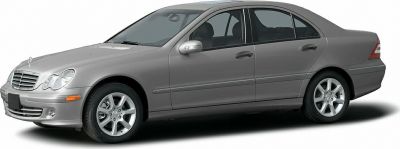
| Production: | 2005-2007 |
|---|---|
| Model Year: | 2004 |
| Length: | 4526-4611 mm178.2-181.5 in |
| Width: | 1980 mm78.0 in |
| Height: | 1400-1432 mm55.1-56.4 in |
